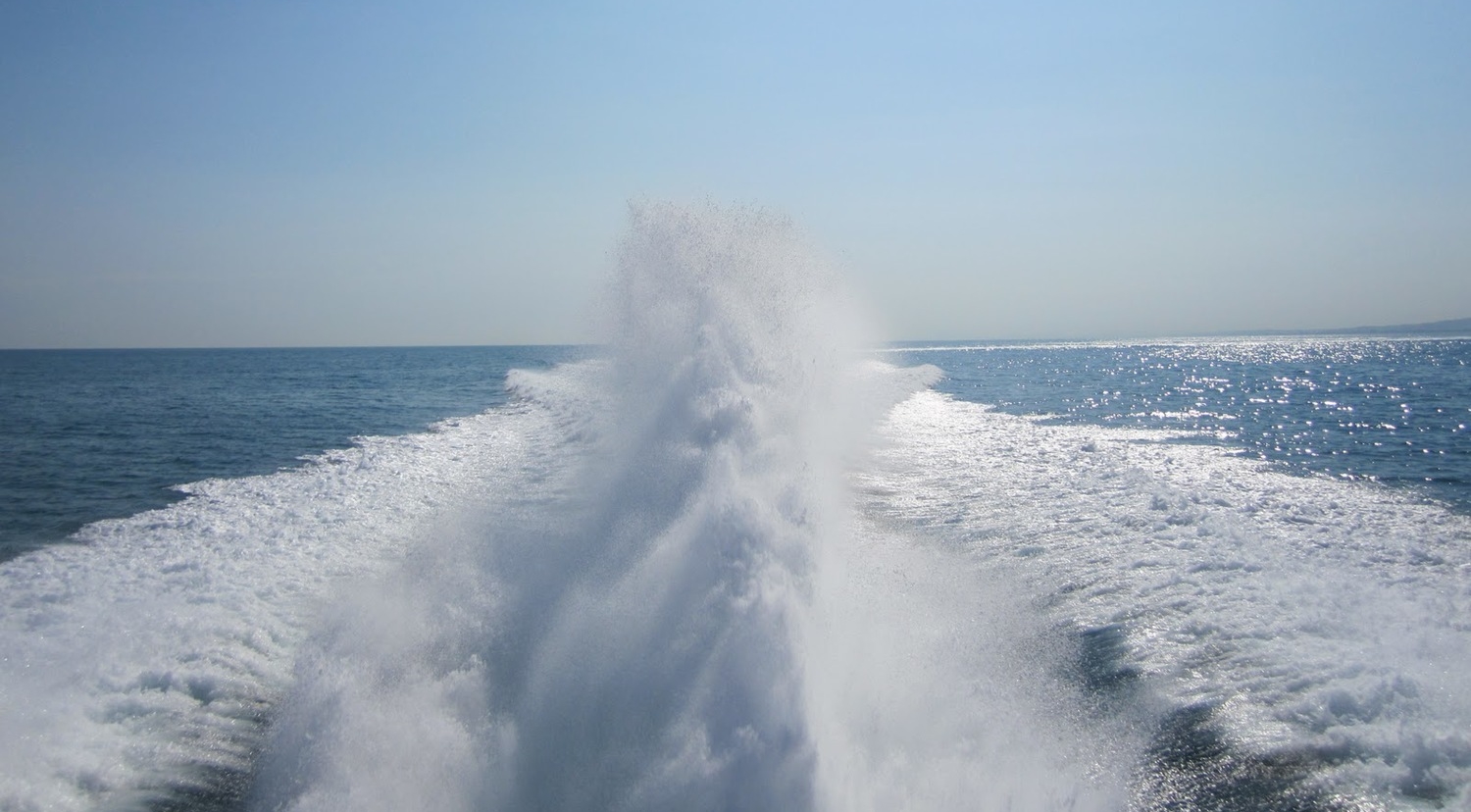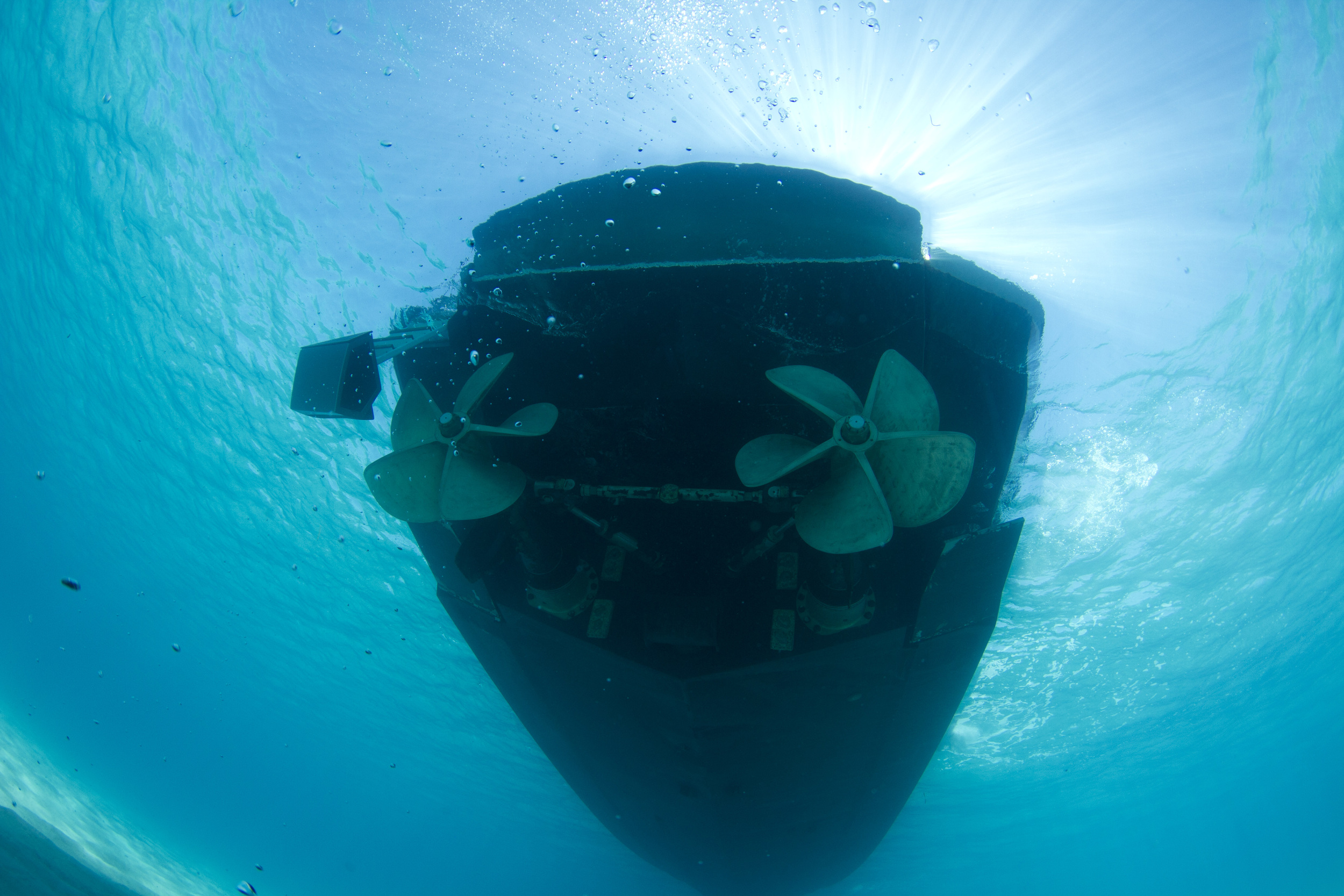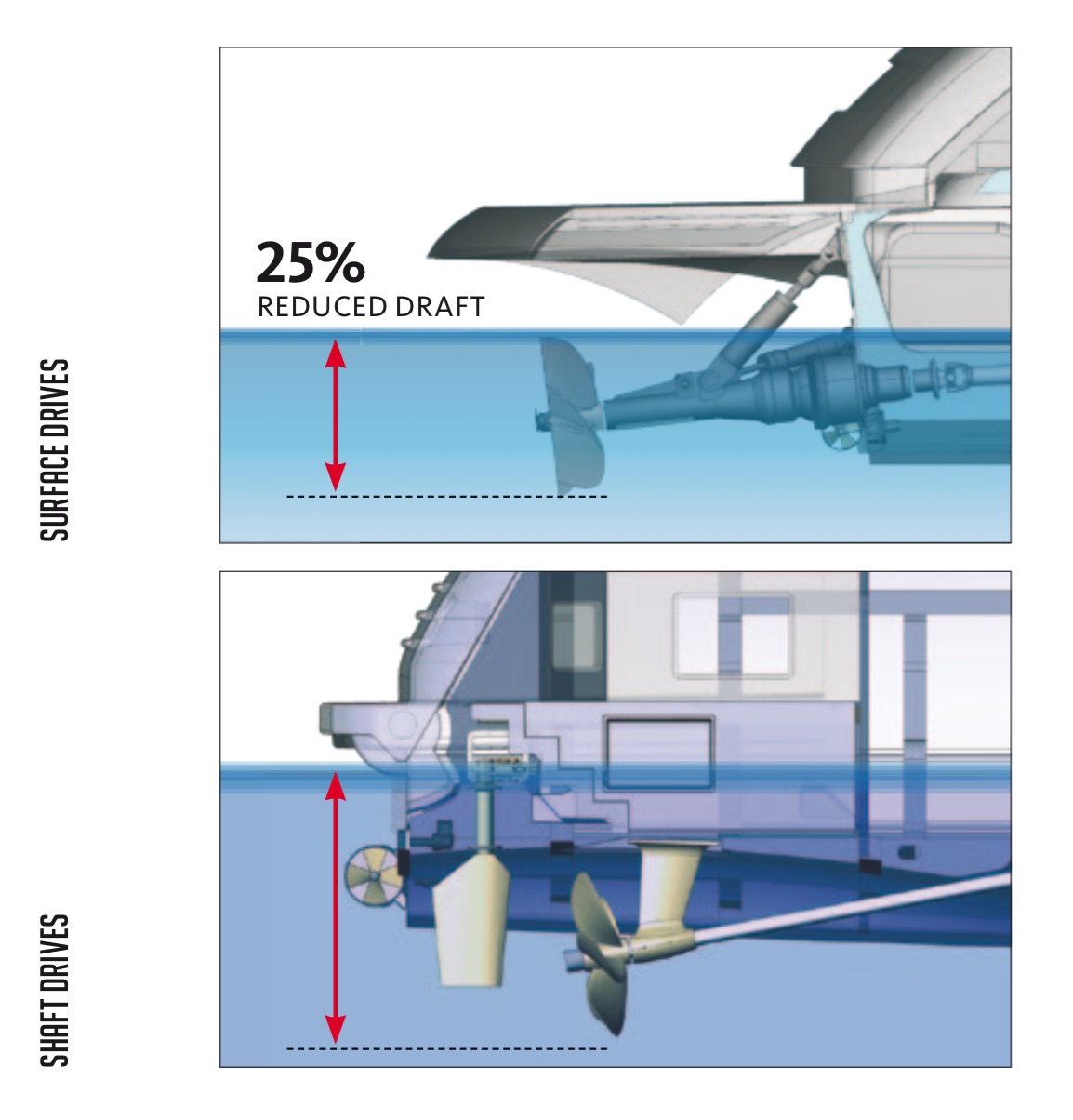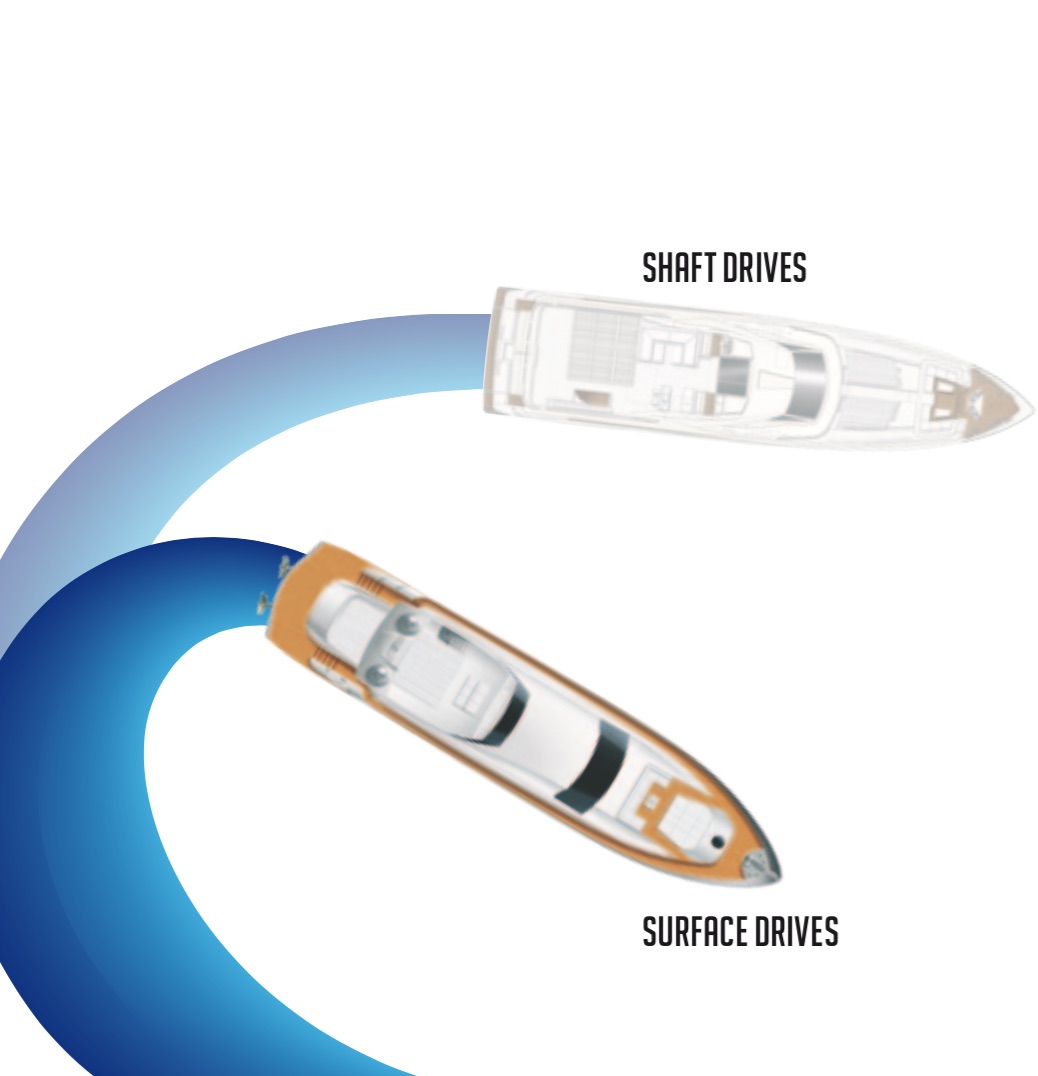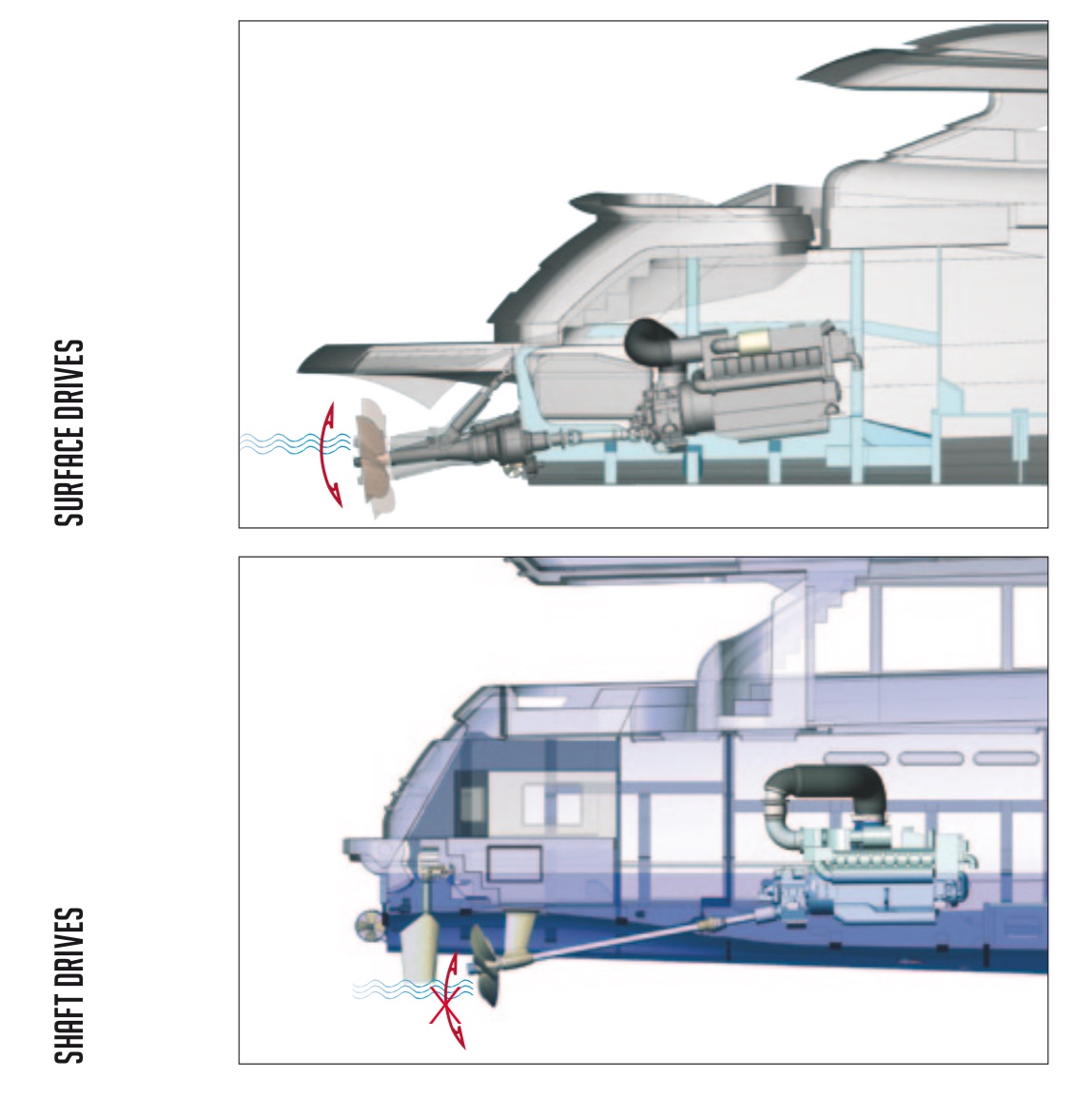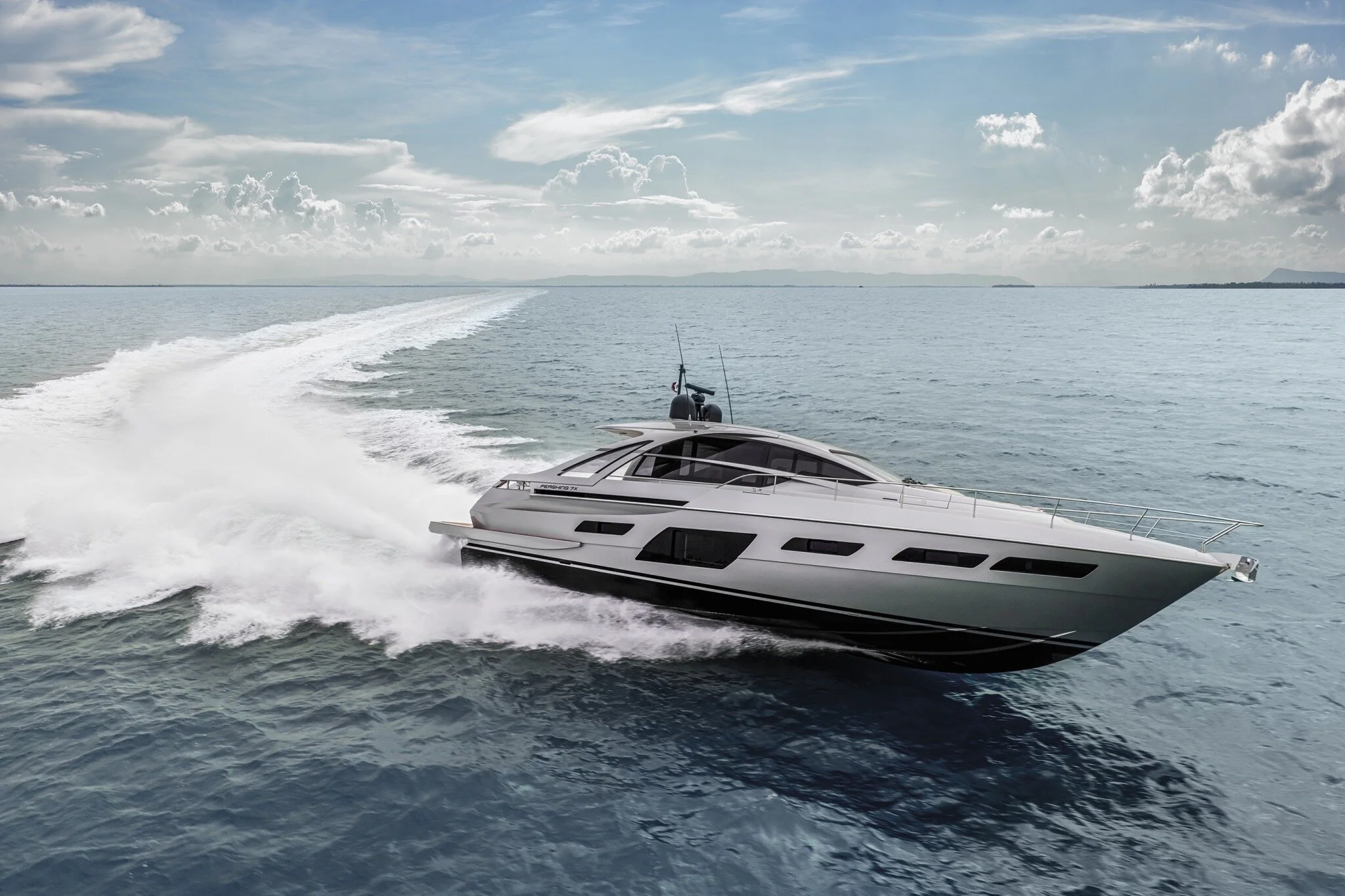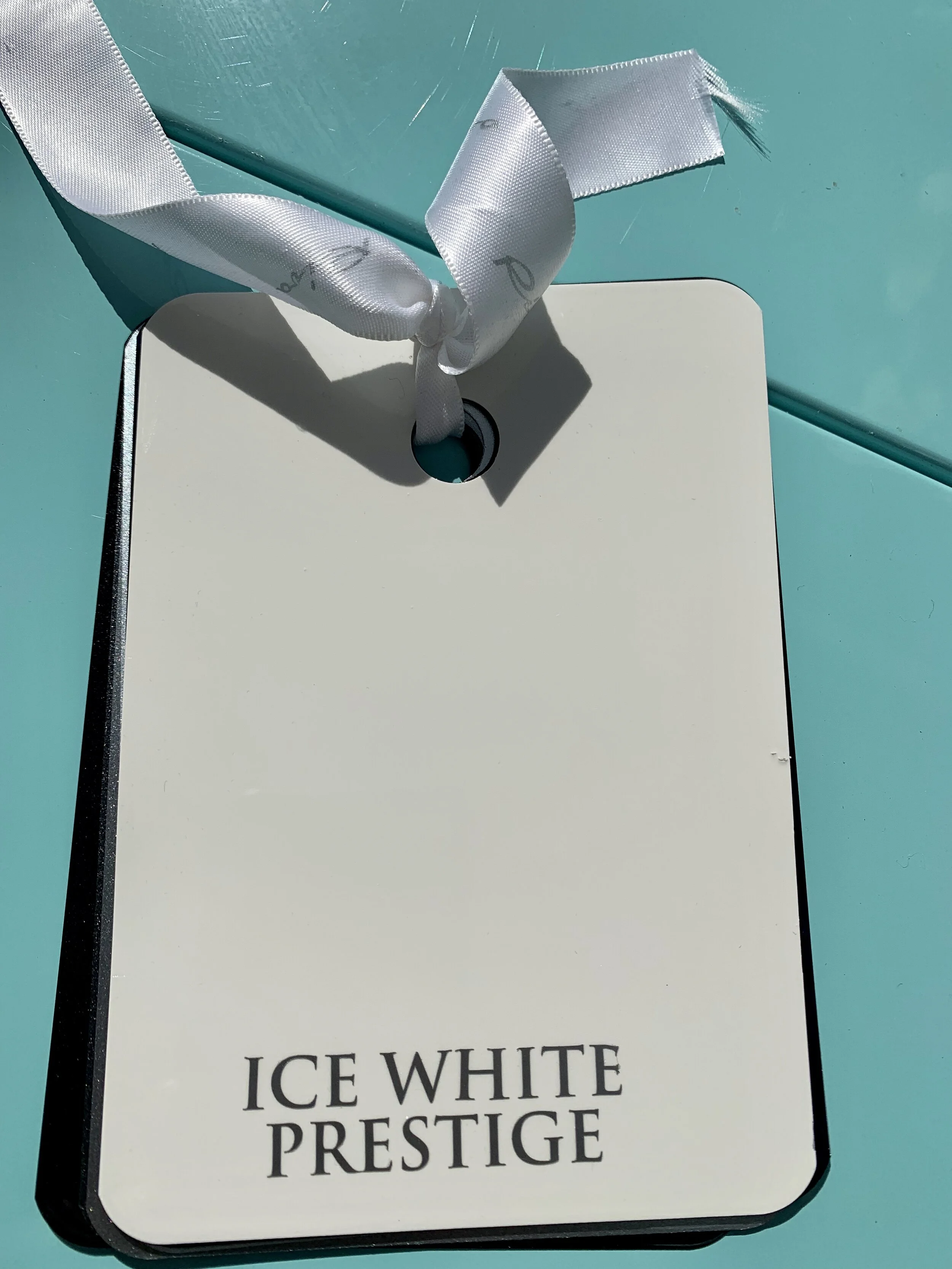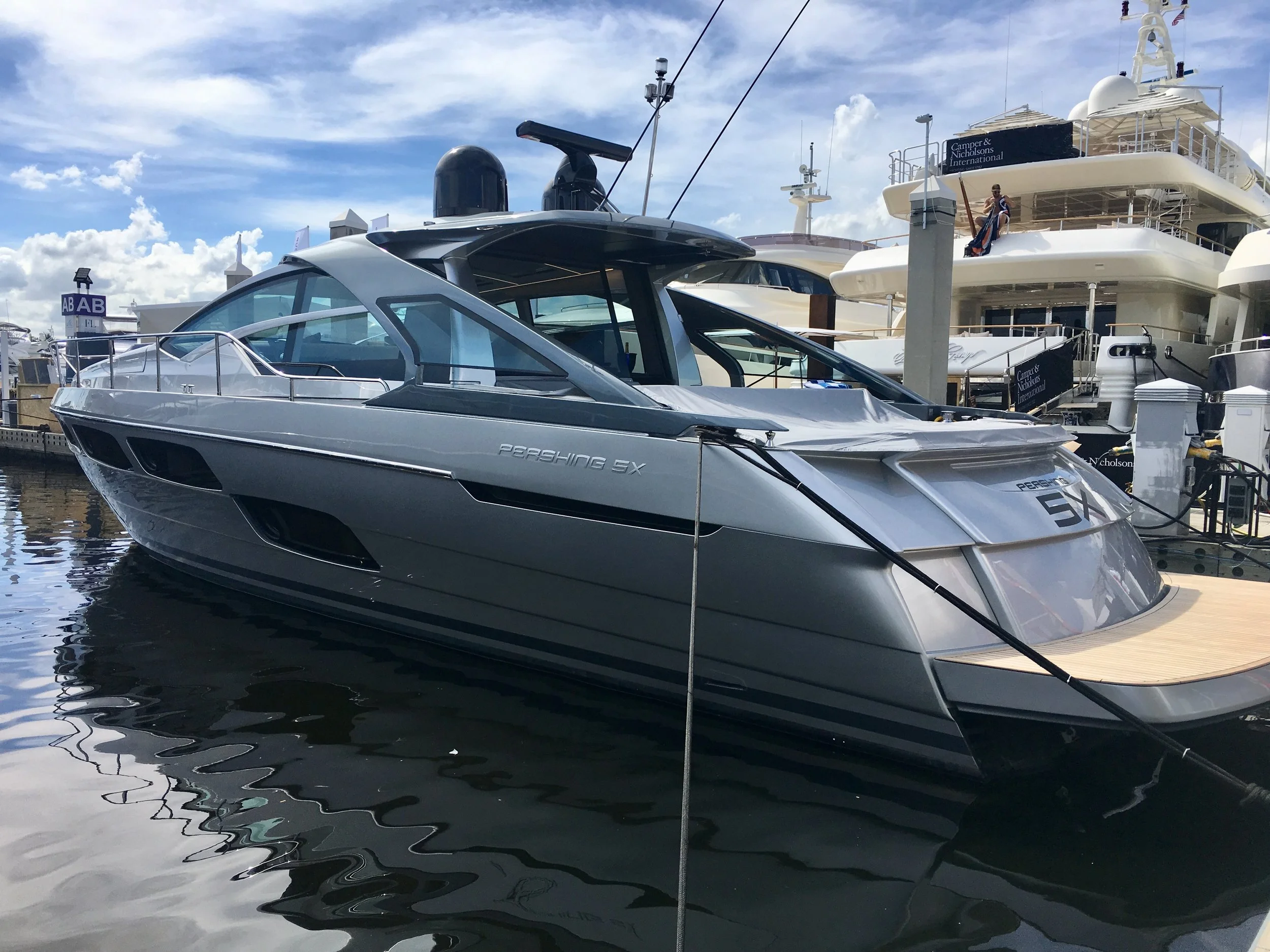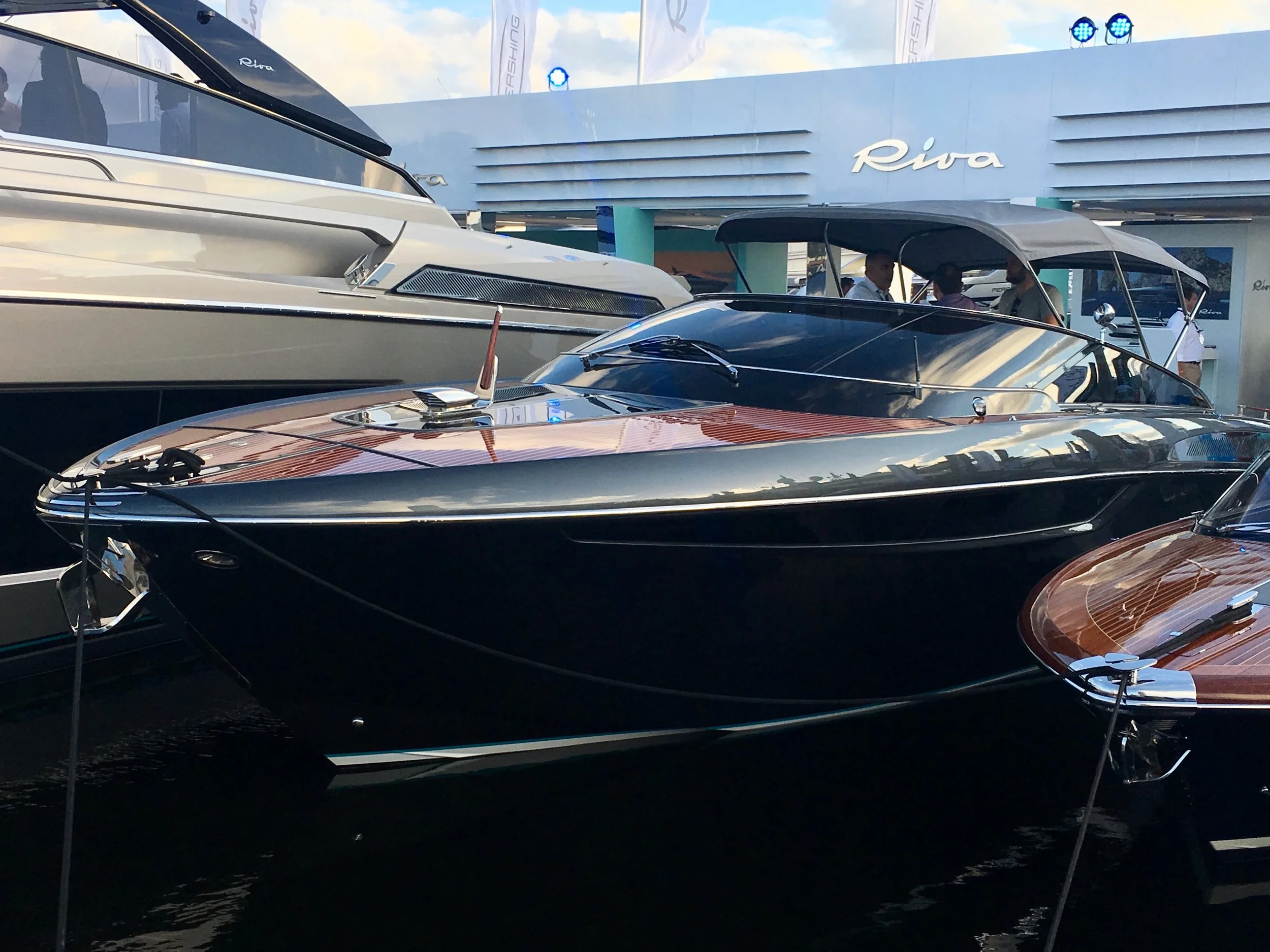WHAT ARE SURFACE DRIVES?
Surface Drives are among the most efficient marine propulsion systems
What are Surface Drives, and how do Surface Drives work? Put quite simply; surface piercing propellers operate half in and half out of the water in the planning wake region of a boat which is just behind the boat transom. Having the propeller at the water surface level reduces drag and the vessel draft, making Surface Drives suitable for multiple applications where the owner is looking to reduce fuel consumption, increase speed and create a more efficient vessel. There are advantages and disadvantages with any propulsion system for water crafts. But for fast planning vessels, surface propulsion has several distinct advantages over its competitors in the pro- pulsion marketplace. The perfect vessel for this propulsion has a sport deep V hull, with a very low power-to-weight ratio, like Pershing yachts. Quickly summarizing we can say that surface-piercing propeller design reduces underwater drag by 50% compared to conventional submerged propeller drive systems (example: Shaft driven system).
The only surfaces to contact the water are propeller blades and a protective skeg. This results in higher overall speed, quicker acceleration, and a better payload to power ratio and less drag significantly improves fuel economy while lowering operating costs. Overall from a Surface Drive system, you can expect greater fuel efficiency for a boat capable of achieving a cruising speed higher than 35/45 knots, zero cavitation and shallower drafts, less maintenance and exceptional astern performance, making Surface Drives the smart choice.
TRIMMABLE PROPELLER SHAFT
The propeller shaft is vertically adjustable, allowing selection of the optimum thrust angle and boat trim for varying load and sea conditions.
POSITIVE THRUST STEERING
Unlike conventional systems that vector propeller thrust off of a rudder, the Surface Drives angles in the direction of motion, maximizing steering control and response.
RESPONSIVE MANOEUVRABILITY
Propellers are located aft, behind the hull, increasing steering leverage and improving maneuverability at any speed.
SHALLOW WATER CAPABILITIES
The drive has a trimmable propeller shaft and no fixed underwater append- ages, requiring significantly less draft than conventionally powered hulls.
INNER VOLUME AND IMPROVED SEAKEEPING
Engines are in the aft part of the boat, this allows for compact installation and maximizes the space for the layout of the cabins. The vessel is better at seakeeping with the center of gravity close to the transom.
NO CAVITATION
Cavitation is the rapid formation and depletion of air bubbles produced by the turbulent flow of a spinning propeller. With surface propulsion, half of the propeller is above the surface, and the surface blades create a super-ventilated environment rather than one of potential cavitation. This eliminates the risk of propeller damage due to cavitation, providing for fewer maintenance issues over time.
PERFORMANCE "SPEED WITH COMFORT" AND ECONOMY
Surface drives are the best solution for fast yachts. Especially if the boat is designed to achieve more than 45 knots. At those speeds, traditional emersed props are damaged by cavitation and vibration, and waterjet systems are heavy and not as efficient.
Higher cruise speeds: by using carefully designed and developed varying pitched, fixed blade propellers, Surface Drives produce a higher cruise speed with reduced fuel consumption.
Easy adjustment to any load condition: capacity to change configuration equals to having best performances under any load condition.
Quicker to plane: trimming the propeller shaft means re-direct pushing force downwards, incrementing nose-down momentum makes yachts quicker to plane with minimal lazy speed range (i.e. 10 seconds from idle to 45 knots for a 22 tons monohull with 2 x 1200HP engines).
Steering by the positive thrust of the propeller and not by the propeller thrust to the rudder. This is an equivalent to sports car rack-and-pinion steering performance.
No limitations to shaft angle, blade top clearance, designed to restrict the selection of optimum diameter propeller.
Ability to adjust submergence to match horsepower output permits con- version of more thrust as appropriately needed also while underway.
BRIEF HISTORY
When we speak about marine propulsion systems, we usually refer to conventional underwater propellers being the most common and worldwide known system used in marine applications. Conventional systems like this, if well designed can allow for performance at top speeds to about 35 knots and in few cases up to 40 knots. The technology to move into the realm of over forty, fifty, sixty knots and above are now available and proven. The conventional propulsion system of fully submerged propeller and inclined shaft has been left behind for the development of Surface Drive systems particularly Arneson Drives being the first articulated surface system released into the market. Howard Arneson thought “I could not find the sweetheart spot that’s right for all conditions” and also it needed rudders to steer. After changing the spot and angle several times, he figured that if he could develop a trimming system, he’d be on the way. A key element in his invention was a ball and a socket arrangement, which when coupled with a constant velocity joint would allow the operator to change the angle and achieve the flexibility Arneson was seeking. The final configuration for the ASD was conceived in 1979 and the first models were constructed and tested in early 1980. Shortly after production began on the smallest model which we now call ASD 6. Initially tested on many different racing applications, ASD’s were immediately successful in a number of racing circuits around the world. From their initial debut, numerous offshore class 1 world championship and two of the world famous Miami-Nassau-Miami offshore races were won on stock, fully warranted, factory Arneson Drive units.

